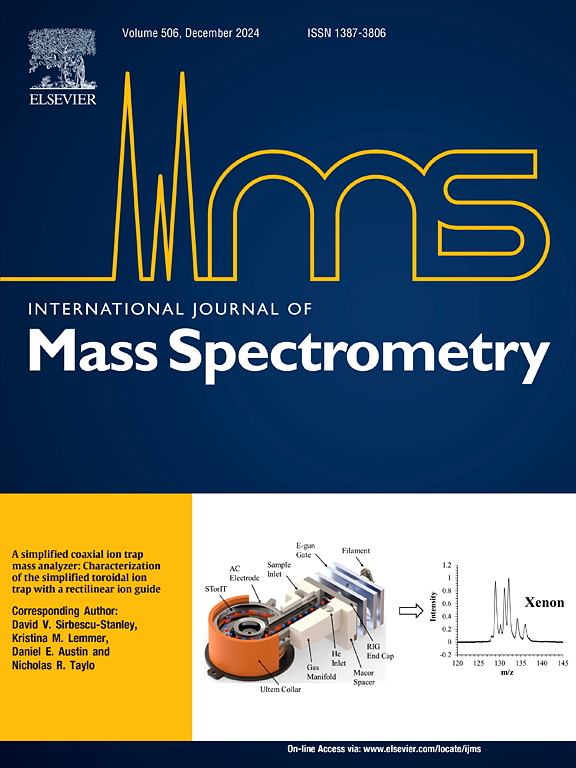热电离质谱法测定铀干扰下238Pu/239Pu同位素比值
IF 1.7
3区 化学
Q3 PHYSICS, ATOMIC, MOLECULAR & CHEMICAL
引用次数: 0
摘要
提出了一种利用热电离质谱法(TIMS)精确分析钚中238Pu/239Pu比值的新方法。该方法是基于U和Pu在总蒸发(TE)过程中热蒸发行为的差异。通过将U干扰指示器加入到Pu溶液中,建立了m/z 238 a.m.u.强度变化与238Pu/239Pu和238U/235U同位素比值的线性模型。采用多元线性回归方法拟合实验数据,确定了238Pu/239Pu和238U/235U的配比。该方法已应用于实验室同位素标准样品Pu(SO4)2.4H2O的分析。结果表明,即使在极小的238Pu样本量(图级)下,238Pu/239Pu比值的相对标准偏差小于0.2%。该方法简单,可作为TIMS表征238Pu的有效工具。本文章由计算机程序翻译,如有差异,请以英文原文为准。

Determination of 238Pu/239Pu isotope ratio under uranium interference by thermal ionization mass spectrometry
A novel approach was developed for the precise analysis of the 238Pu/239Pu ratio in plutonium using thermal ionization mass spectrometry (TIMS). This methodology was based on the difference in thermal evaporation behavior between U and Pu during the total evaporation (TE) process. By incorporating the U interference indicator into the Pu solution, a linear model that related the m/z 238 a.m.u. intensity changes to the isotope ratios of 238Pu/239Pu and 238U/235U was established. The ratios of 238Pu/239Pu and 238U/235U was determined by fitting the experimental data using multiple linear regression analysis. This method had been applied to analyze laboratory isotopic standard samples Pu(SO4)2.4H2O. Results showed that, even with extremely small sample size of 238Pu (picogram level), the relative standard deviation of 238Pu/239Pu ratio was less than 0.2 %. The approach was simple and would be an effective tool as a method for the characterization of 238Pu using TIMS.
求助全文
通过发布文献求助,成功后即可免费获取论文全文。
去求助
来源期刊
CiteScore
3.60
自引率
5.60%
发文量
145
审稿时长
71 days
期刊介绍:
The journal invites papers that advance the field of mass spectrometry by exploring fundamental aspects of ion processes using both the experimental and theoretical approaches, developing new instrumentation and experimental strategies for chemical analysis using mass spectrometry, developing new computational strategies for data interpretation and integration, reporting new applications of mass spectrometry and hyphenated techniques in biology, chemistry, geology, and physics.
Papers, in which standard mass spectrometry techniques are used for analysis will not be considered.
IJMS publishes full-length articles, short communications, reviews, and feature articles including young scientist features.

 求助内容:
求助内容: 应助结果提醒方式:
应助结果提醒方式:


